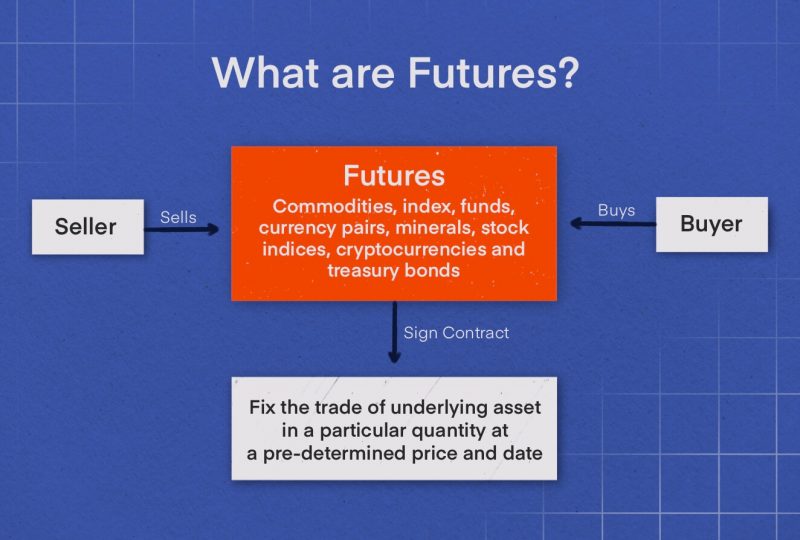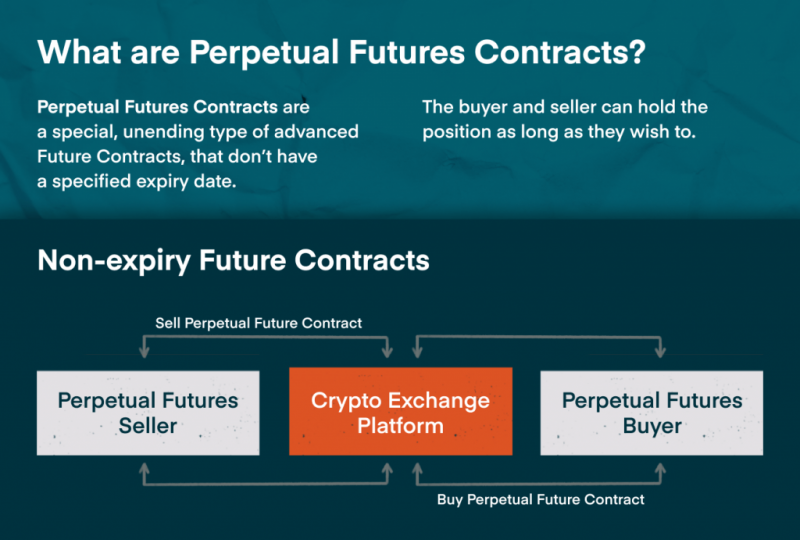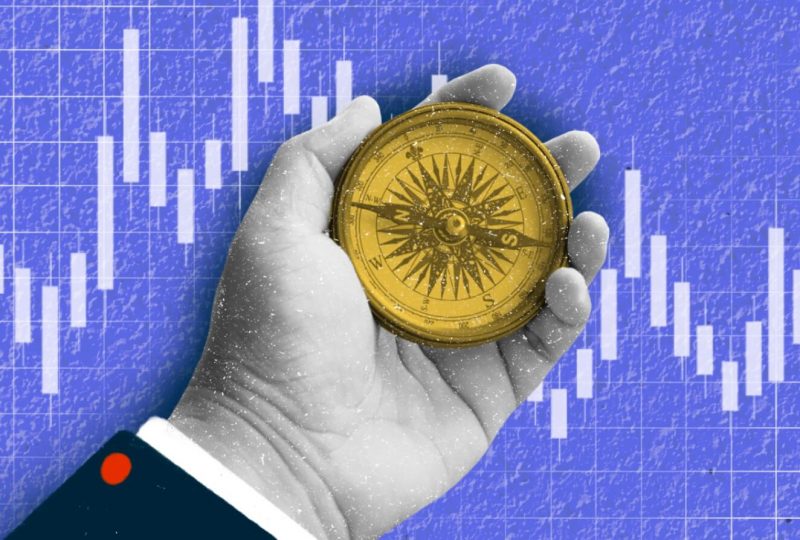Understanding Perpetual Futures: How Do They Work?
Apr 17, 2023

The world of finance is constantly changing, and with it comes new ways to grow your wealth. Cryptocurrencies, stocks, and commodities are known for their ups and downs, and while it might not happen overnight, there’s potential for investments to multiply in value.
To navigate this unpredictable landscape, it’s essential to have a solid grasp of the different tools available to traders. Exchanges offer a range of options, each with its level of risk and reward.
Today, we’ll take a closer look at one of these trading instruments – Perpetual futures contracts – and discover how you can use them to potentially turn a profit in the ever-changing world of finance.
Key Takeaways
- Perpetual futures contracts are a type of derivative that allows traders to take leveraged positions in the market without an expiration date, offering increased flexibility and opportunities for profit.
- Unlike traditional futures contracts that require physical delivery of the specific asset, perpetual futures are cash-settled and use a funding rate mechanism to keep contract prices aligned with the spot market.
- Some key advantages of trading perpetual futures include high leverage, no need for rolling over positions, and the ability to hedge against market volatility.
- Potential drawbacks of trading perpetual futures include increased counterparty risk, complexity, and the lack of regulatory protection in some jurisdictions.
- Popular trading strategies for perpetual futures are speculative operations, arbitrage, and hedging, each catering to different investor objectives and risk tolerance levels.

First, What Are Futures Contracts?
Futures contracts might sound complex, but they’re actually pretty straightforward. If you’ve ever checked out an exchange, you’ve probably seen them promoting futures trading. So, what’s the deal with these contracts?
A futures contract is just a legal agreement that lets you buy or sell a specific item—like a commodity, asset, or security—at a set price on a particular date in the future. To make trading more accessible, these contracts are standardized in terms of their quality and quantity.
When you buy a futures contract, you agree to purchase and receive the item when the contract expires. If you’re selling, you commit to providing and delivering the item at expiration.
The key to futures trading is guessing whether the item’s price will go up or down within a certain period and making a bet based on that prediction. You can profit by capitalizing on your market insights if you’re right.
For example, let’s say that you are a farmer and want to sell your wheat crop. You could enter into a futures contract with a buyer to sell your wheat at a set price on a specific date. This would allow you to lock in a price for your wheat and protect yourself against price fluctuations.
Similarly, investors and traders can use futures contracts to speculate on the future price of an asset. For example, a trader might buy a futures contract for oil with the expectation that the oil cost will rise. If the price of oil does indeed rise, the trader can sell the contract at a profit.

What Are Perpetual Futures Contracts?
Perpetual futures, a relatively new addition to the world of trading, were first proposed by Robert Shiller in 1992 to enable derivatives for less liquid markets. It wasn’t until 2016 that BitMEX introduced perpetual futures contracts to the cryptocurrency market, and since then, their popularity has skyrocketed. Today, these types of futures are available on numerous exchanges, often trading in billions of dollars in volume.
As the name suggests, perpetual futures contracts are permanent, lacking an expiry date. This means traders can maintain their long or short positions indefinitely unless their positions are automatically liquidated.
By holding perpetual futures contracts indefinitely, traders also gain exposure to an asset or index without worrying about a predetermined maturity date. This unique feature enables the creation of futures markets for illiquid assets.
What is the Funding Rate?
The funding rates built into perpetual futures contracts keep the contract price stable relative to the spot market price of the underlying asset. The funding rate tends to be positive when the market is bullish and the price is rising, and negative when the market is bearish and the price is falling.
The funding rate mechanism keeps perpetual futures contracts’ prices consistent with the market values of their underlying assets. Funding occurs every eight hours, and traders only pay for or receive funding if they have a position at one of these times.
The funding rate consists of the premium and interest rate, both determined by the market performance of each instrument.
What Is Initial Margin?
The initial margin is the very minimum needed to initiate a trade. It’s more like a collateral for a trade. The minimum amount of money required to keep a trade open is called the maintenance margin.
In perpetual futures, profits and losses are marked to market and regularly credited to each side’s margin account. Marking to market refers to pricing an asset, such as a cryptocurrency or other security, at its current market rate.
Variations in an asset’s market value lead to traders’ daily settlement of profits and losses. Both parties can enter the arrangement at any time.
How Do Perpetual Contracts Work?
In the ever-evolving world of cryptocurrency trading, perpetual contracts have gained traction as a popular and versatile instrument. These contracts enable traders to establish leveraged positions that fluctuate in value according to changes in an index price, which, for instance, can reflect the United States dollar spot price of Bitcoin (BTC) across multiple cryptocurrency exchanges.
The index price represents the average price of an asset, calculated based on the size of significant spot markets and the volume of trades on those markets. This ensures that traded prices align with or are close to spot market prices.
To illustrate how perpetuals function, let’s consider a hypothetical scenario.
Suppose a trader possesses some BTC. When they buy the contract, they either want the amount to increase in tandem with the BTC/USD price or move in the opposite direction when they sell the contract. If each contract is worth $1 and they purchase one contract at $50.50, they must pay $1 in BTC. However, if they sell the contract, they receive $ 1’s worth of BTC at the selling price, even if they sell before acquiring.
It’s crucial to note that the trader buys contracts, not BTC or dollars. So, why trade crypto perpetual futures? And how can the contract’s price be ensured to follow the BTC/USD price?
The key lies in a funding mechanism. When the contract price is lower than the BTC price, long position holders are paid the funding rate (compensated by short position holders), incentivizing them to buy contracts. This causes the contract price to rise and realign with the BTC/USD price. Likewise, short position holders can buy contracts to close their positions, likely increasing the contract price to match the BTC price.
Conversely, when the contract price is higher than the BTC price, long position holders pay short position holders, encouraging sellers to sell the contract and driving its price closer to the BTC price.
The difference between the contract and BTC prices determines the funding rate one will receive or pay, effectively maintaining a balance between the contract and spot prices.

Perpetual Futures vs. Traditional Futures
Traditional futures contracts involve a tangible commodity, such as gold, which must be delivered when the contract expires according to its terms and conditions.
This necessitates the physical handling of the gold, increasing carrying costs or the expense of storing the commodity. The time between the present and the prospective settlement of the contract also impacts the gold’s price.
As the gap widens, future price predictions become less certain, and the potential price disparity between the spot and traditional futures markets grows, further raising the contract’s carrying costs.
Nevertheless, all open positions must eventually expire or settle as the contract price converges with the spot price upon settlement.
In contrast, unlike conventional futures, where the contract price and the underlying asset’s value ultimately converge, a perpetual contract does not have a future reference date.
As said, Perpetual futures use the funding rate mechanism to enforce market convergence regularly. Let’s refresh ourselves: the funding rate is a fee shared between long and short position holders, aiming to keep the contract price in line with the spot value of the underlying asset and prevent significant price fluctuations.
The key differences between perpetual and traditional contracts can be summarized as follows:
Expiration
A traditional futures contract has a set expiration date, while the perpetual contract does not.
Carrying Costs
Traditional contracts involve carrying costs due to the need for physical handling and storage, whereas perpetual contracts do not require physical delivery and have no associated carrying costs.
Price Convergence
Traditional futures contracts rely on the natural convergence of the contract price and the underlying asset’s value at settlement. In contrast, perpetual futures employ the funding rate mechanism to ensure regular price convergence.
Price Predictability
As the time gap between the present and the settlement date widens in traditional futures contracts, price predictions become less specific. In contrast, perpetual contracts’ funding rate helps maintain a more stable price alignment with the underlying asset.
These distinctions make the perpetual contract an appealing alternative to traditional futures contracts, offering greater flexibility and mitigating challenges associated with carrying costs and price predictability.

Pros and Cons of Perpetual Futures Contract
As with everything else on this planet, trading Perpetual futures has pros and cons, so let’s break them down.
Pros:
- High Leverage: Perpetual futures offer high leverage, allowing traders to maximize their exposure to the market and potentially increase their profits.
- No Position Readjustment: Traders need not constantly readjust their positions, as perpetual futures lack a pre-specified delivery date.
- Hedging Opportunities: Perpetual futures provide additional hedging options in margin and spot trading, helping traders limit their risks when the market moves against their active orders and open positions.
Cons:
- Unregulated Nature: Perpetual futures are unregulated, leaving victims unprotected and defaulters potentially unpunished for misconduct.
- Increased Counterparty Risk: The absence of an expiration date increases the counterparty risk associated with these financial instruments.
- Complexity: Tying perpetual contracts to the current market values of the assets they represent makes them more complex trading products than traditional futures contracts.
Traders should carefully consider these pros and cons when deciding whether to engage in perpetual futures trading. Pick a reliable broker, get a basic market understanding, and make your decisions accordingly.

Perpetual Futures Trading Strategies
Investors’ trading strategies for perpetual futures depend on their objectives, the type of instrument, and the guidance of professional brokers or exchanges, as transactions cannot be made entirely independently. Here’s a quick breakdown of what generic strategies you can adopt when trading perpetual futures.
- Speculative Operations
Speculative operations are a common strategy for stock market participants. By leveraging liquidity and high “leverage” in perpetual futures, speculators aim to profit from the difference between the purchase and sale prices of the contracts. Since perpetual futures are highly liquid instruments, the chances of profiting from speculation can be significant.
- Arbitrage Operations
Arbitrage involves taking advantage of price discrepancies in the same or related assets across different markets or time points. There are two types of arbitrage: temporal arbitrage, which involves transactions in the same market at different time points, and spatial arbitrage, which occurs across different markets at the same moment in time.
In arbitrage operations, investors typically engage in a series of transactions to profit from these price differences. Arbitrage is often considered a beginner-friendly strategy, as it offers relatively low risks while still generating profit from perpetual futures price discrepancies. However, it may not provide the highest profitability.
- Hedging
Hedging is a risk management strategy that involves taking an opposing position in the perpetual futures market to protect an existing investment or position in the spot market. In this case, investors use perpetual futures contracts to offset potential losses in their spot holdings.
For instance, if an investor holds a long position in a cryptocurrency like Bitcoin and anticipates a potential decrease in its value, they can open a short position in a Bitcoin perpetual futures contract. This way, if the price of Bitcoin drops, the short position in the perpetual futures contract will generate a profit, offsetting the losses in the spot market holdings.
Conversely, if the price of Bitcoin increases, the spot market holdings will increase in value, compensating for any losses in the perpetual futures short position.

FAQs
- What are perpetual futures in crypto?
Perpetual futures in crypto are a type of derivative contract that allows traders to take long or short positions on cryptocurrencies without an expiration date, enabling them to benefit from price fluctuations and leverage their investments.
- What is the difference between standard futures and perpetual futures?
The main difference between standard and perpetual futures is the absence of an expiration date. While standard futures have a predetermined price and settlement date, perpetual futures can be held indefinitely, using a funding rate mechanism to keep contract prices aligned with the spot market.
- How long can I hold perpetual futures on the exchange?
Perpetual futures can be held indefinitely on the exchange, as they do not have an expiration date. However, traders must maintain sufficient margins in their accounts to avoid liquidation and should monitor their positions closer to manage risk.
- Why do users trade futures contracts?
People buy perpetual futures to gain exposure to cryptocurrencies’ price movements without owning the underlying asset. They also offer high leverage, allowing traders to increase their potential returns and provide opportunities for hedging against market volatility.
The Bottom Line
Perpetual futures have become a go-to choice for traders and investors looking to make higher returns than spot trading offers. But remember, these futures can be pretty complex and carry a fair amount of risk. So when you’re trading perpetual futures, make sure to tread carefully and always follow sound risk management practices, especially if you’re using leverage.
To really excel at trading perpetual futures, you’ll need a solid grasp of the market, a good understanding of how it all works, and experience with simpler trading methods like spot and margin trading. Plan your trading strategy with care, and only invest what you can afford to lose.




